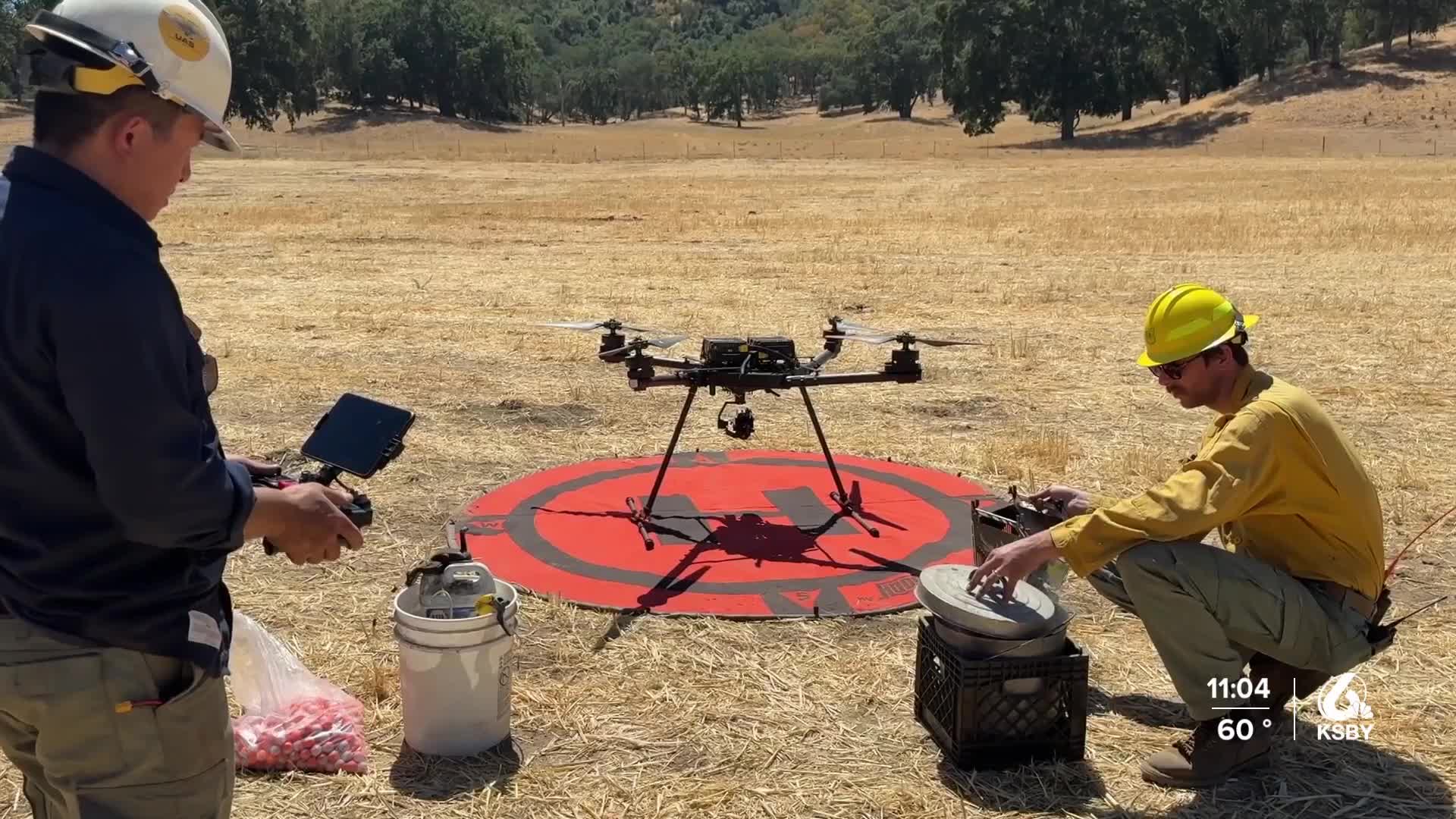Fire crews have been fighting the Gifford Fire in San Luis Obispo and Santa Barbara Counties using all of their resources and tools— one key standout being the Unmanned Aircraft System (UAS) drones.
“This aircraft can do aerial ignitions," said Milton Truong, an Aircraft Systems Pilot. "It flies in GPS mode, 45 mph max speed. It goes out to 2 1/2 to 3 1/2 miles of range.”
These high-tech tools are the future of firefighting for many reasons. The drones' infrared technology allows them to detect fire hotspots; they are also able to fly through smoke and at night.
“When there is heat on the ground or somewhere else, the camera will flash pretty brightly, and then we’ll have a temperature gauge that bounces around the screen to tell you how hot that specific heat is,“ Truong explained.
The drones also have mapping technology to identify exact areas of the fire.
"All the images that a camera takes [are] geo-referenced," Truong said.
Most importantly, the drones help with controlled burns, which have contributed to the Gifford Fire's increasing containment rate.
According to Truog, the drone holds small balls called Dragon Eggs.
“If you inject a little bit glycol, or in other words, antifreeze, in here, it'll start a chemical reaction and fire comes out," Truong explained.
The crew tests and times the Dragon Eggs from the moment they are dropped from the drone to the second they ignite, allowing for a precise controlled burn taking weather and topography into account.
Joe Suarez, UAS module leader for the National Park Service, says that this tool has been a game-changer for fighting the Gifford Fire because it helps keep crews safe.
“We don’t need to put people out there on the line, looking into the grain, looking for those spot fires. The drone can do that," Suarez said. "By reducing that exposure, taking those folks off the line and allowing the drone to do it is key.”





